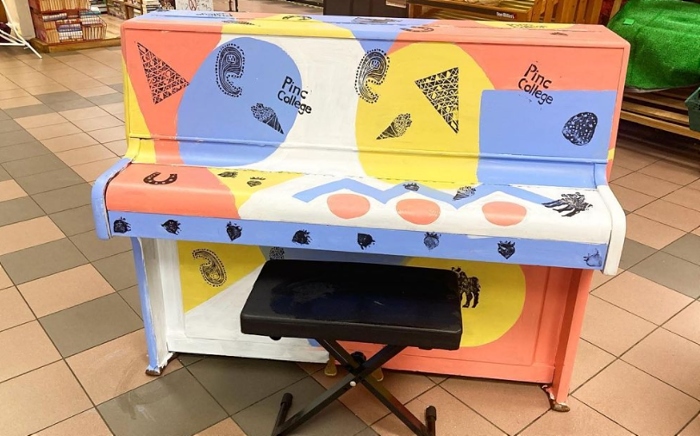
Crewe Lyceum Theatre is hitting the high notes with a piano project designed to boost vibrancy of two of Cheshire East’s town centres after lockdown.
Five pianos – decorated by local artists and community groups – have been placed at key locations in Crewe and Macclesfield.
It is part of a project funded by the Welcome Back Fund from the European Regional Development Fund (ERDF).
They are available for members of the public to play and interact with as well as being used as part of a programme of performances, from headline professional acts to community choirs and student musicians.
The project will also make use of the Crewe Lyceum Theatre’s very own Bechstein Grand Piano, donated to the theatre in 2008 by the Men of Crewe Railway Works.
The project is being run by Crewe Lyceum’s creative learning and engagement manager Lucy Thomson-Smith, in collaboration with local musical director, Treona Holden.

Lucy said: “The Crewe Lyceum is an integral part of the cultural landscape in Cheshire.
“Through these pianos, it is a great way for our local theatre to reach beyond its doors and bring music, creativity and entertainment into the streets across the county.
“We hope people will enjoy listening to the musical performances or even have a go on the keys themselves!”
The pianos, requisitioned with support from Cheshire East Council, can be found at the following locations until September 2022:
Crewe Lifestyle Centre, Moss Square, decorated by Crewe Lyceum Young Ambassadors
Crewe Market Hall, Earle Street, painted by artist David Jewkes
Crewe Lyceum Theatre, Heath Street
Macclesfield Indoor Market, Grosvenor Shopping Centre, decorated by students from the Pinc College
Macclesfield Bus Station, painted by artist Becca Smith






















Recent Comments